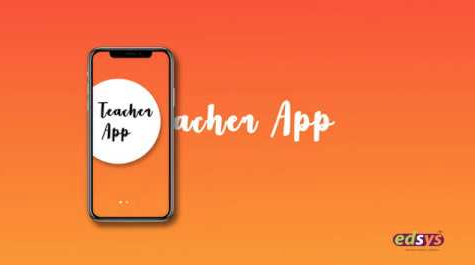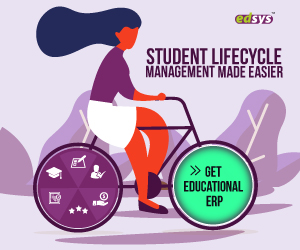Categories(658 Blogs)
Select Category
Watch Right Now
Teacher App - Class
Schedule & Attendance Management App
Parent App from Edsys

Best School Bus Tracking System

Cashless School - For Smart Schools of Tomorrow


20 6th Grade Science Projects That Will Wow Your Students

Students will love to have hands-on experience projects to understand the practical side of what they learn in class.
Especially subjects like science are better understood with practical reference.
In addition to understanding the concepts on a deeper note, students would be eager to explore more on the subject by bringing science to life.
Are you looking for interesting science projects for your middle school students?
Best Free Science Apps (Check it Now)
Unlike the elementary school projects, these students will be ready to put up a science fair with minimum involvement from adults.
Doing so will boost up their confidence level and they can grow up to come up with single-handed projects in the upper classes.
Here you can have a look at some of the very exciting and impressive science fair project ideas that are the best ideal for 6th-grade students.
1. Turn Milk into plastic
The plain milk at home can be turned into plastic polymers by using just household materials. You just need hot milk, a Styrofoam cup, a measuring cup, white vinegar, paper towels, and a spoon.
Take four teaspoons of white vinegar with one cup hot milk in a Styrofoam cup
- Mix it slowly and shovel out the curds onto the towels
- Any excess liquid can be pressed out using the paper towels
- Now squeeze the curds to see a ball of casein polymer
- Students can then make shapes out of it and dry for 48 hours
2. Can you separate salt from water?
The objective of the project is to evaporate water to form salt crystals and 6th-grade students would love it for sure. You need a baking sheet, salt, cooking pot, water, and black paper.
- Make a concentrated solution of salt and water in the pot
- Keep the black paper on the baking sheet.
- The salt water has to be then poured into the baking sheet
- Make sure that it covers the black paper
- You are supposed to keep the baking sheet in a warm place
- Continue observe the recordings until entire water is gone
- You can see the leftover salt crystals once water is gone
3. Do leaves change colors in the fall?
Students can learn about photosynthesis with this experiment. The leaf colors appear while chlorophyll breaks down. You need 3 leaves, plastic baggie; rubbing alcohol, paper coffee filter, jar, and a small bowl.
- Leaves have to be crushed in alcohol, cover it and leave for sometime
- Wick up the liquid using coffee filter strip in the jar and leave for drying
- Leaf colors appear while the filter dries
4. Is there iron in your breakfast cereal?
Many breakfast cereals are having iron content that makes you healthy. This fun experiment can, in fact, tell if it is true. You just need warm water, zip lock bag, breakfast cereal, and a strong magnet.
- Half fill the bag with water and cereal and seal it to leave an air pocket
- Shake it well for 1 minute and leave for 20 minutes
- Bring the magnet outside bag and shake and move it near air bubble to see small black flakes of iron
5. Test a Popsicle stick bridge
Students can learn more about physics and engineering through this project. You need Popsicle sticks, pipe cleaners, weights, glue, push pins, paper, and pencil.
- Discuss different types of bridges and their structure
- Let students work in groups to make a basic structure of their chosen bridge type
- Finally, test each bridge using the weights to see the strongest design
6. Do tea and cola stain your teeth?
Students can learn about dental hygiene and chemistry through this experiment. Egg shells can be used to analyze how different beverages effects on your teeth color as both have the same composition. You need eggs, tea, cola, and 2 plastic containers.
- Keep the eggs into different containers filled up with tea and cola.
- The results can be observed over several days
- You can notice the change of color over time
7. Rotting fruits
This is an easy experiment which needs a little patience. You need a bowl, bananas, oranges, kiwis, apples and a camera.
- Keep each type of fruit in different bowls at room temperature
- Make sure it is not handled by anyone
- Keep a Daily Observation Chart to mark the changes noted
- Include entries like the change of color, odor, skin browning, moisture, and dehydration
- Take photos at different stages of the experiment
- Continue the process for 14 days
- Make a summary report to review the changes in each fruit
8. Make naked eggs
This simple experiment just needs raw eggs, vinegar and glass jars.
- First,a keep the eggs in a jar and make sure they are not touching
- Cover it with vinegar and leave it for refrigerating overnight
- Next day, you can see that the hard outer shell is gone with only soft membranous egg left
9. Make motorized tiny dancers
Students can learn about electricity and motors in this experiment. You need copper wire, AA battery, neodymium disc magnets, wire cutters, hot glue, pliers and crepe paper.
- Arrange 3 magnets and keep them on the battery (negative side)
- Wind the wire using interesting templates
- Attach the same on the ends of the battery
- Now you can simply watch the spinning dancers
10. Create compost in a cup
Students can learn about decomposition and ecology in this experiment. You need plastic cups, plastic wrap, ¼ cup dirt, 1 tablespoon water, rubber band and organic material like kitchen scraps, coffee grinds, and leaves.
- The cup has to be filled up with water, dirt, and organic material.
- Use plastic wrap to cover tightly and wind with the rubber band
- Leave it in a warm location
- Add 1 tablespoon water each day by day and shake it
- You can see the materials decompose over the period
11. How to clean up old coins?
Students can explore the possibilities of Chemistry through this simple but interesting experiment. You need Ketchup cola, vinegar, salt, apple juice, water, tweezers, 6 oxidized pennies, and paper towels.
- Take different solutions in different containers
- Submerge discolored coins one in each container
- Leave it for some time, say 10 minutes
- Later analyze to see which solution was the most effective
12. Dissect a flower
Students can learn about botany in this simple but interesting experiment. You need one flower, magnifying glass, cutting implement and tape.
- Tare it a bit by bit to know more about the parts
- Start off with the petals and leaves
- Remove it carefully and examine part by part
- Teachers can discuss the use of each part followed by how it works.
13. Chemical energy in a bottle
Students can explore more about chemical energy through this experiment. You need 1 litre bottle, balloon, goggles; plastic spoon, 4 spoons of vinegar, funnel and 1 spoon of baking soda.
- Pour vinegar into the bottle after wearing goggles
- Pour baking soda into the balloon using the funnel
- Place balloon neck around bottleneck without any spills
- Once it is done, shake baking soda into vinegar by lifting balloon and observe
14. Clone some cabbage
Students can learn about cloning and asexual reproduction with this experiment. You need 2 plastic bags, 2 paper towels, cabbage, scissors, kitchen knife, cutting board, spray bottle, permanent marker and water.
- Paper towel has to be folded three times followed by water spraying it until damp
- Keep it in bags and repeat the procedure
- Cabbage stem has to be cut from the leaf
- Keep it in different bags on towel and seal them by leaving some air in it
- Keep them at room temperature in a light place
- The stem starts growing roots over the period
- This can be planted to make a clone of itself
15. The mechanics of carnival games
This simple experiment can be done using a small sturdy table, masking tape, tape measure, plastic water bottles, tennis ball or baseball and water.
- Water bottles have to be arranged into a pyramid shape on the table
- Decide a throw line by measuring and mark it.
- Now you can toss the ball to start the game
- Use different styles of pyramids, empty and full bottles on different attempts
- Draw conclusions by keeping track of results
Know More: 50 Math Riddles For Kids with Answers
16. Dissect an owl pellet
Students can learn about ornithology and digestive system using this experiment. You need owl pellet, magnifying glass, tray, rubber gloves, tweezers, and paintbrush.
- Make sure you wear the gloves before starting
- Carefully and slowly pull apart the owl pellet
- Slowly remove the bones and claws you find
- Carefully clean it and keep aside for inspection and identification.
17. Extracting DNA from Strawberries
Students learn about DNA and genetics while conducting this experiment. You need strawberry, dish soap, salt, Isopropyl alcohol, Ziploc bag, measuring cups and spoons, small glass container, strainer, water, and tweezers.
- Mix the DNA extraction liquid using 2 spoons of dish soap, 1 spoon of salt and water.
- Take a strawberry in the plastic bag and mash it until there are no big chunks
- Add DNA extraction liquid, swirl it gently and let it sit
- Separate fluid from solids using a coffee filter
- Pour cold rubbing alcohol in equal quantity into it and wait to see a white cloudy substance (DNA)
18. Impurities in tap and bottled water
Students can learn more about the properties of water through this experiment. You need to tap water, bottled water, and a water test kit for the project.
- First, take tap water in a glass which is clean
- Then take a clean glass of bottled water
- First taste both water to get a basic difference
- Then use the water test kit to check all properties
- Record readings for pH, total hardness, nitrate and nitrite concentrations, free chlorine, iron concentrations, total chlorine, and copper concentrations and come to the conclusion
19. Type of light and plant growth
Students learn about photosynthesis through this experiment. You need radish seeds, soil, pots, metric ruler, water, a pen, tape, a fluorescent light, labels, and an incandescent lamp.
- Set up at least 8 pots with soil and radish seeds.
- Keep 4 of them under fluorescent light and 4 under an incandescent lamp
- Keep them in a place with minimal exposure to sunlight
- Water them daily and take photos and readings at different stages
- Review your findings to see the impact of light on its growth
20. Sound waves
Students can learn about the intensity of sound waves through this experiment. You need two spoons of different sizes, a heavy ruler and 48” of yarn.
- A loop has to be tied from the middle of the yarn
- Slide spoon handle’s top to loop and tighten it
- Let the spoon hangs down to waist level while you hold the yarn
- Twist the string ends to your fingers and press against your ears
- Let your partner tap on the spoon using a ruler while you can hear a loud noise like sound waves
These interesting science fair project ideas are sure to wow your students.
Considering such projects or activities in the classroom will make the sessions more interactive and impressive and the students are sure to crave for more sessions.
Such ideas can, in fact, invoke the interest for the subject among students.
They will slowly start loving science and be ready to learn more without the actual feel of learning.
This is also a great platform to instill scientific curiosity and enhance their diligence.
Recent Blogs
Our Educational Services
Popular Blogs
Subscribe

SUBSCRIBE TO OUR NEWSLETTER
Sign Up and Recieve the Latest News
Don’t Worry, We Don’t SpamExplore Our Extensive Researched Educational App Directory
Visit Now


















